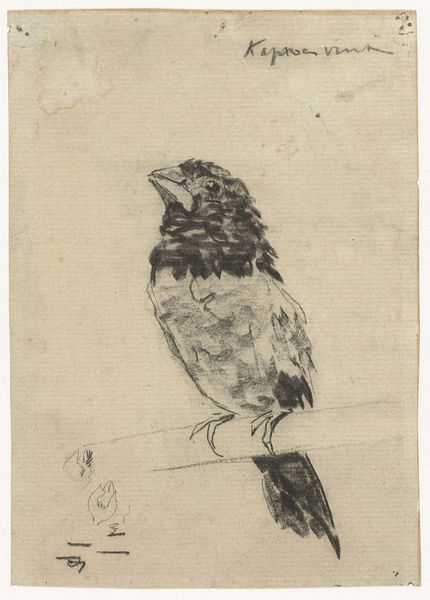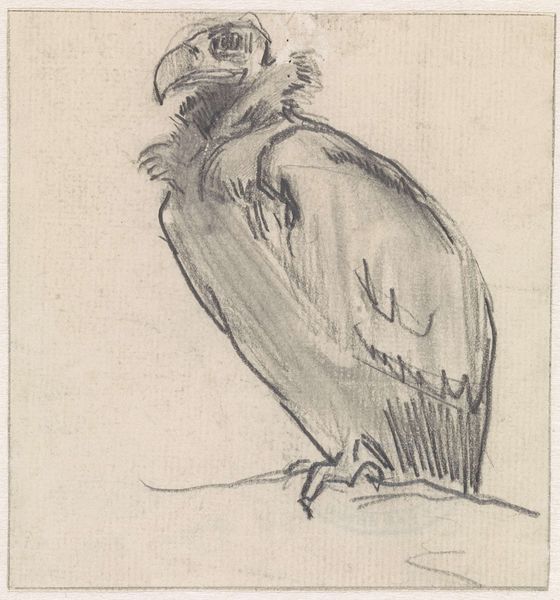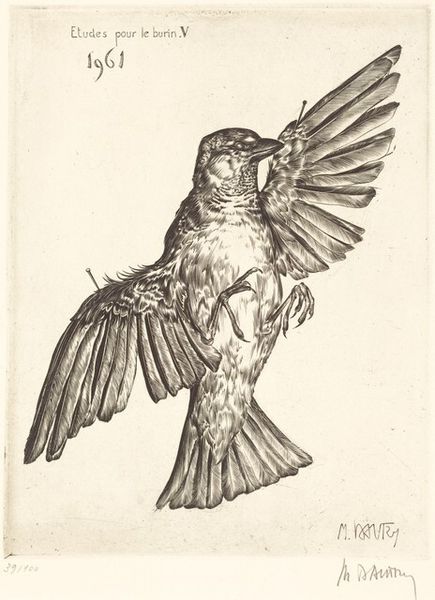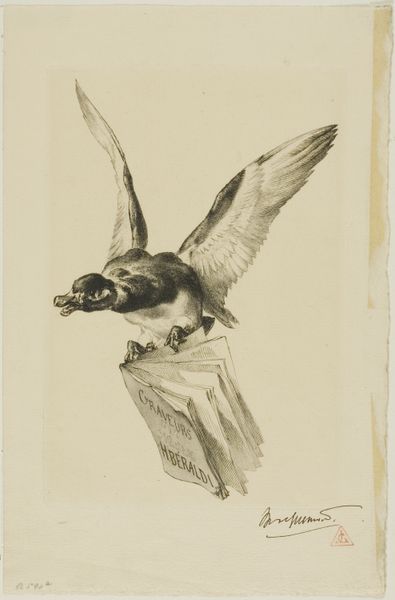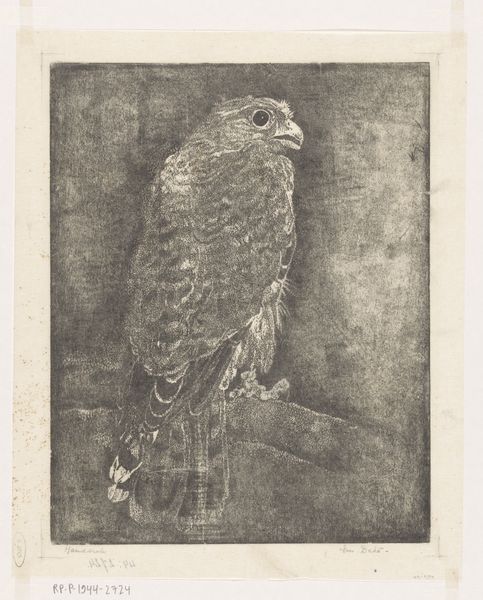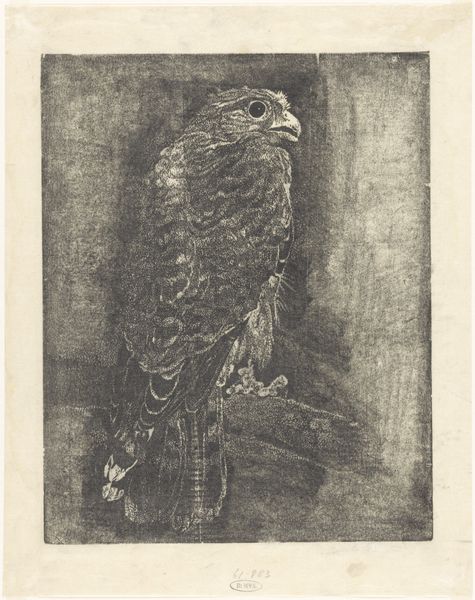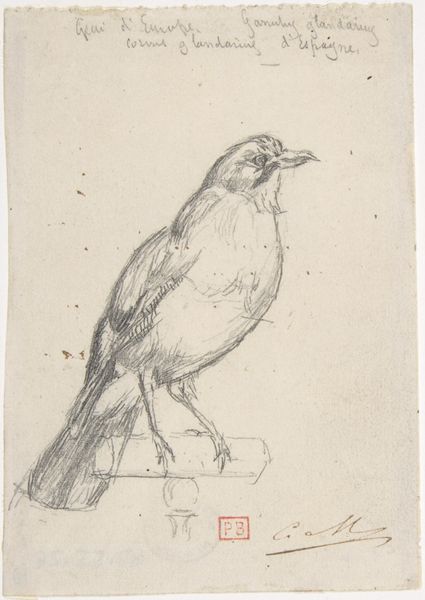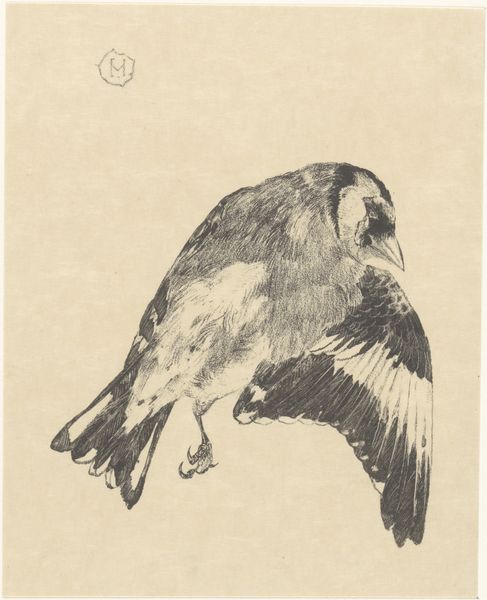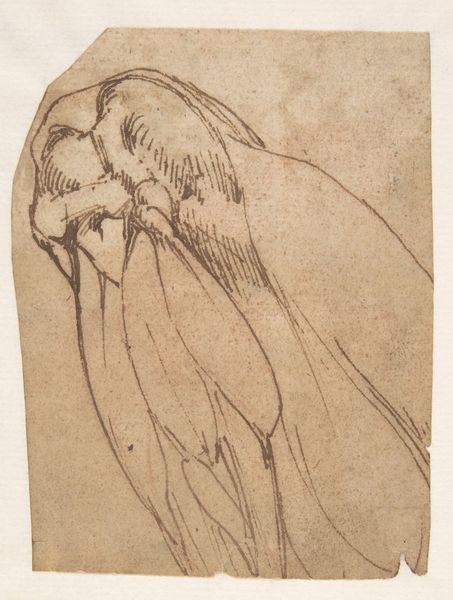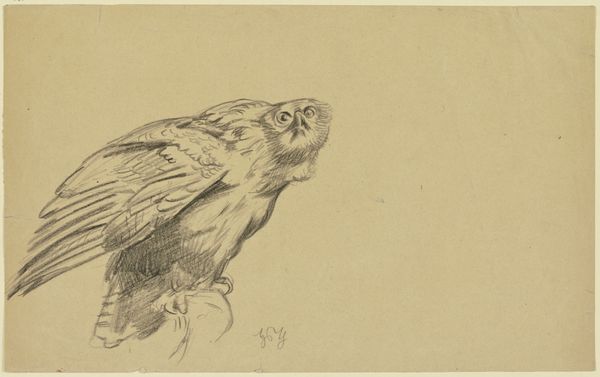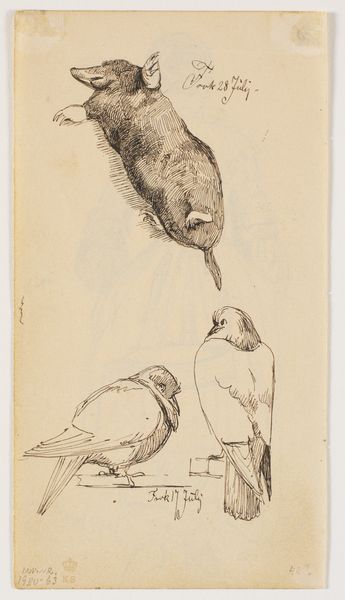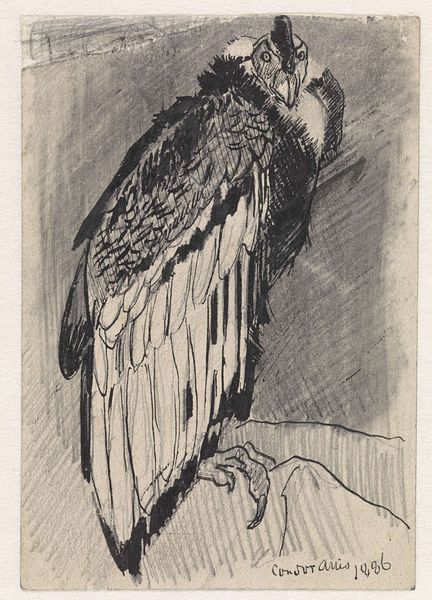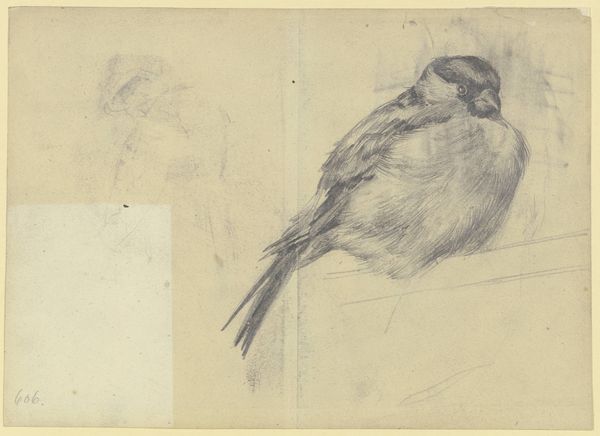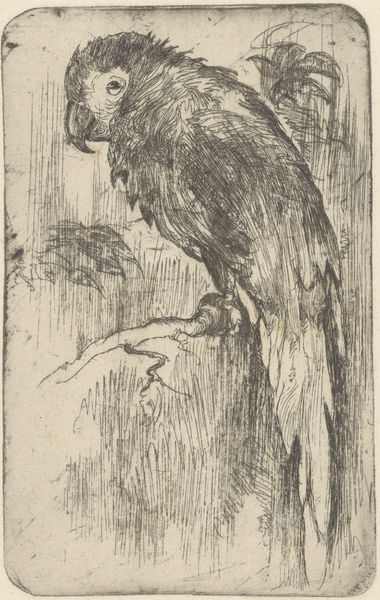
drawing, pencil, charcoal
#
drawing
#
figuration
#
pencil
#
charcoal
Dimensions: height 149 mm, width 105 mm
Copyright: Rijks Museum: Open Domain
Editor: Here we have Gerrit Willem Dijsselhof's "Kaproenvink," made sometime between 1876 and 1924. It's a pencil and charcoal drawing. It seems almost confrontational, this bird staring right at me. What do you see in this piece? Curator: This seemingly simple drawing offers us a powerful lens through which to examine the complex relationship between humans and the natural world. Think about the period it was created in - a time of intense industrial expansion, urbanization, and colonialism. How might this representation of a bird, so vulnerable and exposed on the page, be interpreted as a commentary on the encroaching domination of nature? Editor: So, you’re saying that even a small drawing like this can have political undertones? Curator: Absolutely. Consider, too, the use of charcoal and pencil – readily available, almost primitive tools. Does this choice speak to a longing for a simpler existence, a resistance against the technological advancements that were reshaping society at the time? Also, does the gaze of the bird reflect the trauma of ecological loss and the growing tension of the era? What if the subject isn’t as benign as it looks? Editor: That's a fascinating perspective. I hadn’t considered the materials themselves as part of the message, or its context to contemporary social issues. Curator: It invites us to consider the artist’s position within these power structures and encourages us to critically examine our own relationship with the environment and marginalized voices. And consider who defines which things have importance? Editor: It gives us something to think about. Thanks! Curator: My pleasure. I am happy to explore this piece with you further anytime.
Comments
No comments
Be the first to comment and join the conversation on the ultimate creative platform.
